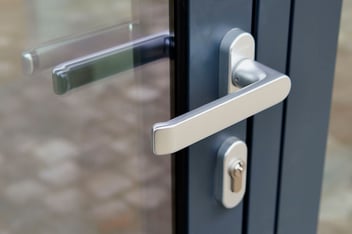Four Best Practices for Master Key Policies

Keys are vital in managing the overall security of your organization.
They enable access to different departments, equipment, facilities, machinery, entire buildings, and other secure sections of your company. To that end, proper key management practices are indispensable to the seamless running of business operations.
Although many modern companies have shifted to electronic access control systems, many institutions still rely on traditional key management techniques.
Today, commercial key management entails the use of master key systems. These systems are essential because they enhance overall security and integrate simplified access. A basic master key system enables you to have one key that opens multiple locks.
At some point, you may be interested in creating master key control policies in your organization to manage the use of master key systems. This guide explores the current master key policy best practices that you can adopt in your company for enhanced security.
What Is a Master Key System?
A master key system can be defined as a group of locks and keys organized into a hierarchical system from top to bottom. Master key systems operate such that the top key opens the top lock and the locks in the lower categories. The fewer the number of master keys that your organization uses, the more secure the system becomes.
Master key systems can be divided into four subcategories as explained below:
● Great Grand Master Key: This key opens all the locks in lower categories
● Grand Master Key: This key opens several master key and change key locks
● Master Key: This key locks and unlocks all change key locks within a master key system
● Change Key: A change key, a sub-master key, or a user key can only open a single lock
As earlier stated, a master key system enables the top key to open the top lock and the locks in the lower categories. This system enables adequate key control, especially in commercial facilities.
As a commercial facility owner, you will want to implement a master key system that can guarantee the security of physical assets, digital assets, and employees. The system should include master keys that are restricted and serialized, enabling your company to avoid the creation of unauthorized copies and the tracking of all distributed keys.
The main advantage of master key systems is that they foster designated access. If your organization has several departmental levels, master key systems ensure that different needs of stakeholders are catered to.
For example, suppose you run an IT company with finance, support, management, enterprise architecture, and system administration departments. You will want to implement a master key system that allows differentiated access to offices, data centers, stores, etc. Master keys can cater to these differences and ensure privacy, security, and ease of access.
Best Practices for Master Key Policies
Now that you understand master key systems let us look at master key system best practices.
1. Access Permissions Policy
The first aspect of an effective master key management policy is the identification of the various categories of key users within your organization.
Outlining the key holders and users ensures that the master keys do not fall into the wrong hands. It is also vital to identify the various entry point to different offices, departments, data centers, stores, etc. For example, you can note the different doors with great grand master key, grand master key, master key, and change key locks and where they are found within your organization.
After noting these aspects, you can then allocate access restrictions, especially to specific individuals who are not allowed to access high-security areas.
2. Key Tracking Policy
Another policy to implement is the key tracking policy.
You should define how the keys within the master key system should be serialized and how they are to be assigned security access levels. This policy allows an organization to keep track of all the keys and the people responsible for them.
An ideal method of key tracking within an organization is recording all key issuances and the associated serial numbers. Such a system can help track employees holding specific keys, the nature of security approval issued for each key, and the date that each key was issued.
It is vital to add that key tracking software should be a major consideration when creating a key tracking policy. Cloud-based key tracking software should be used since it avails up-to-date information regarding the performance of the key tracking system.
3. Key Storage Policy
Another inclusion you should consider is a key storage policy.
You can use key storage cabinets that ensure the proper storage of keys, key duplicates, and backup copies. Today, different storage cabinets suit different needs.
For example, you might be interested in a storage cabinet that can automatically send alerts when one or more keys are missing. Such automated cabinets can help your security team quickly identify loopholes in the system and ensure the quick return of missing keys.
When formulating the key storage policy, integrate a system that suits your company's workforce size, organizational structure, and employees' specific needs.
4. Hardware Keying Design Policy
Last but not least, you should implement a hardware keying design policy.
You should design a master key management system that shows all the key entry and exit points within your organization. This milestone can be best implemented by contracting the services of an architectural hardware consultant to develop a customized security hierarchy for your company.
The consultant should also develop a master key system schedule corresponding to the hardware keying design and key control policies. The resultant key chart should then help determine the access control of each door within the organization.
Wrapping Up
As a commercial facility owner, you will want to implement a master key management system that enhances the overall security of your organization. A master key system is organized into a hierarchical system. The top key opens the top lock and the locks in the lower categories.
When developing a master key system policy document, there are five key considerations: access permissions, key tracking, key storage, and hardware keying design.
For more information on master keys, contact us today or visit our website. Our purpose is to help you maximize your organization's facility and reduce overall costs through our cloud-based key management systems, re-imagined hardware solutions, and access to our professional support team.



![Key Control: The Role of a Master Key [+Best Practice Tips]](https://info.instakey.com/hs-fs/hubfs/Key%20Control-%20The%20Role%20of%20a%20Master%20Key.jpeg?width=352&name=Key%20Control-%20The%20Role%20of%20a%20Master%20Key.jpeg)

